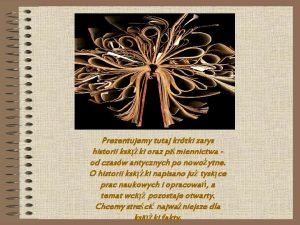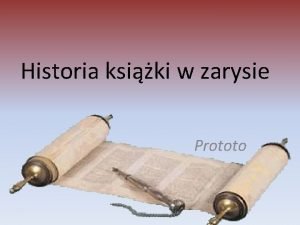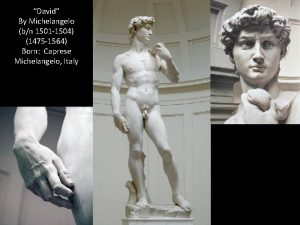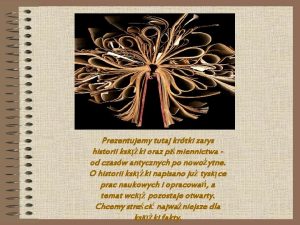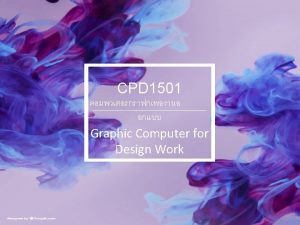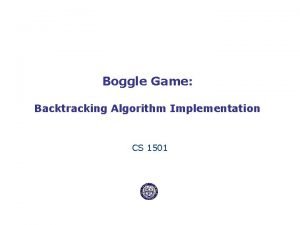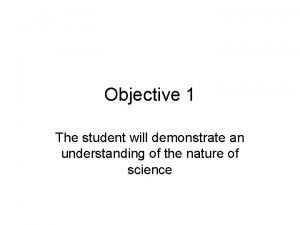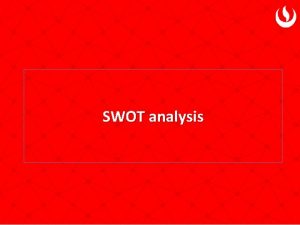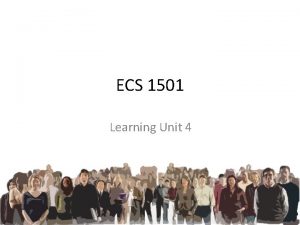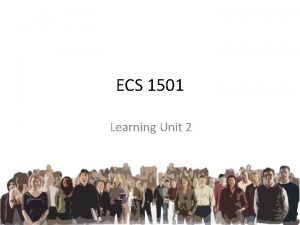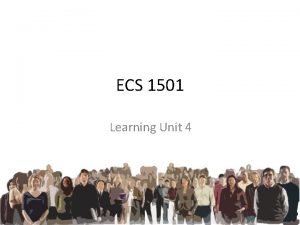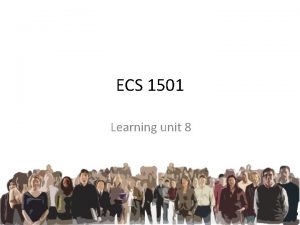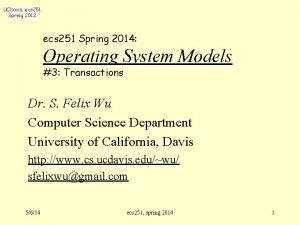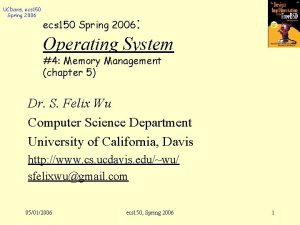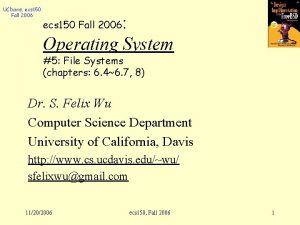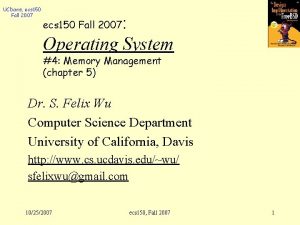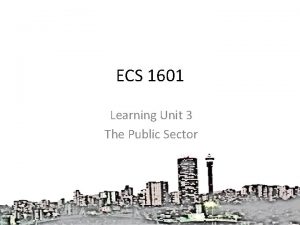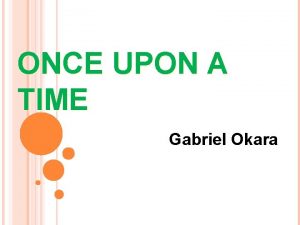ECS 1501 Learning Unit 3 Learning Outcomes Once














- Slides: 14

ECS 1501 Learning Unit 3

Learning Outcomes Once you have studied this Learning Unit you will: • know more about the three major flows in the economy; • know the difference between a stock and flow variable; • distinguish between the four factors of production; • know more about households and firms; • distinguish between the goods and factor market; and • explain interaction between households and firms.

There are many sectors in an economy. Like a chain, al the sectors are linked, one sector cannot work without being affected by others In this study unit we will examine how the goods and factor markets work together.

3. 1 Production, income & spending Read pg. 40 in your textbook. • Microeconomics = When you are examining individual parts of an economy • Macroeconomics = When you are dealing with the economy as a whole • In an economy there is a high degree of interdependence

Read pg. 40 – 42 in your textbook. 3. 1 Continue When households spend the money on goods and services, firms get revenue, which they use to produce more goods and services When producers produce goods and services, they pay households for their factors of production (like their labour). This leads to an income for households. Production Spending Income Households spend this income, to buy goods and services

Stock and flows Stock variable Has no time dimension and can only be measured at a specific moment I. e. the world population Study Box 3 -1 in your textbook. Flow variable Has a time dimension and can only be measured over a period of time I. e the number of babies born in a year

3. 2 Source of production: . The factors of production Read pg. 42 – 45 in your textbook. There are 4 main factors of production Natural Resources Labour Capital Human Resources Entrepreneurship

3. 2 Source of production: . The factors of production Read pg. 42 – 45 in your textbook. There are 4 main factors of production Natural Resources Labour Capital Non-Human Resources Entrepreneurship

3. 2 Source of production: . The factors of production Read pg. 42 – 45 in your textbook. There are 4 main factors of production Natural Resources Labour Capital Primary Resources Entrepreneurship

3. 2 Source of production: . The factors of production Read pg. 42 – 45 in your textbook. There are 4 main factors of production Natural Resources Labour Capital Secondary Resources Entrepreneurship

Natural Resources • Consist of all the gifts of nature • Includes land, water, vegetation, minerals, marine resources animal life and many more • Availability cannot be increased • Minerals: Non-renewable or exhaustible assets • Supply of natural resources are fixed • Both quantity and quality of natural resources are important

Labour • The exercise of human mental and physical effort in the production of goods and services • Includes all human effort exerted with a view to obtaining reward in the form of income • Quantity of labour depends on the size of the population and the proportion of the population that is willing and able to work (labour force) • The quality of labour is usually referred to as human capital, it includes skill, knowledge and health of workers

Capital • Comprises of all manufactured resources such as machines, tools and buildings which are used in the production of other goods • Capital goods are produced to be used in the production of other goods • Capital goods do not have an unlimited life, they are subject to wear and tear • Provision for depreciation is made for the replacement of existing capital goods • In the national accounts it is referred to as consumption of fixed capital

Entrepreneurship • Entrepreneurs are the people who combine the factors of production and who take risks by producing goods • They are the driving force behind production • They are innovators and introduce new products and new techniques on a commercial basis
 Stary druk sprzed 1501 roku
Stary druk sprzed 1501 roku Druk sprzed 1501
Druk sprzed 1501 David 1504
David 1504 Stary druk sprzed 1501 roku
Stary druk sprzed 1501 roku Cpd 1501
Cpd 1501 Boggle board algorithm
Boggle board algorithm Psc 1501 portfolio pdf
Psc 1501 portfolio pdf Learning outcomes examples english
Learning outcomes examples english Water cycle learning outcomes
Water cycle learning outcomes Notice writing learning objectives
Notice writing learning objectives Learning outcomes of swot analysis
Learning outcomes of swot analysis Rhymes learning outcomes
Rhymes learning outcomes Planning goals and learning outcomes
Planning goals and learning outcomes Photolysis in photosynthesis
Photolysis in photosynthesis Objectives of photosynthesis
Objectives of photosynthesis
